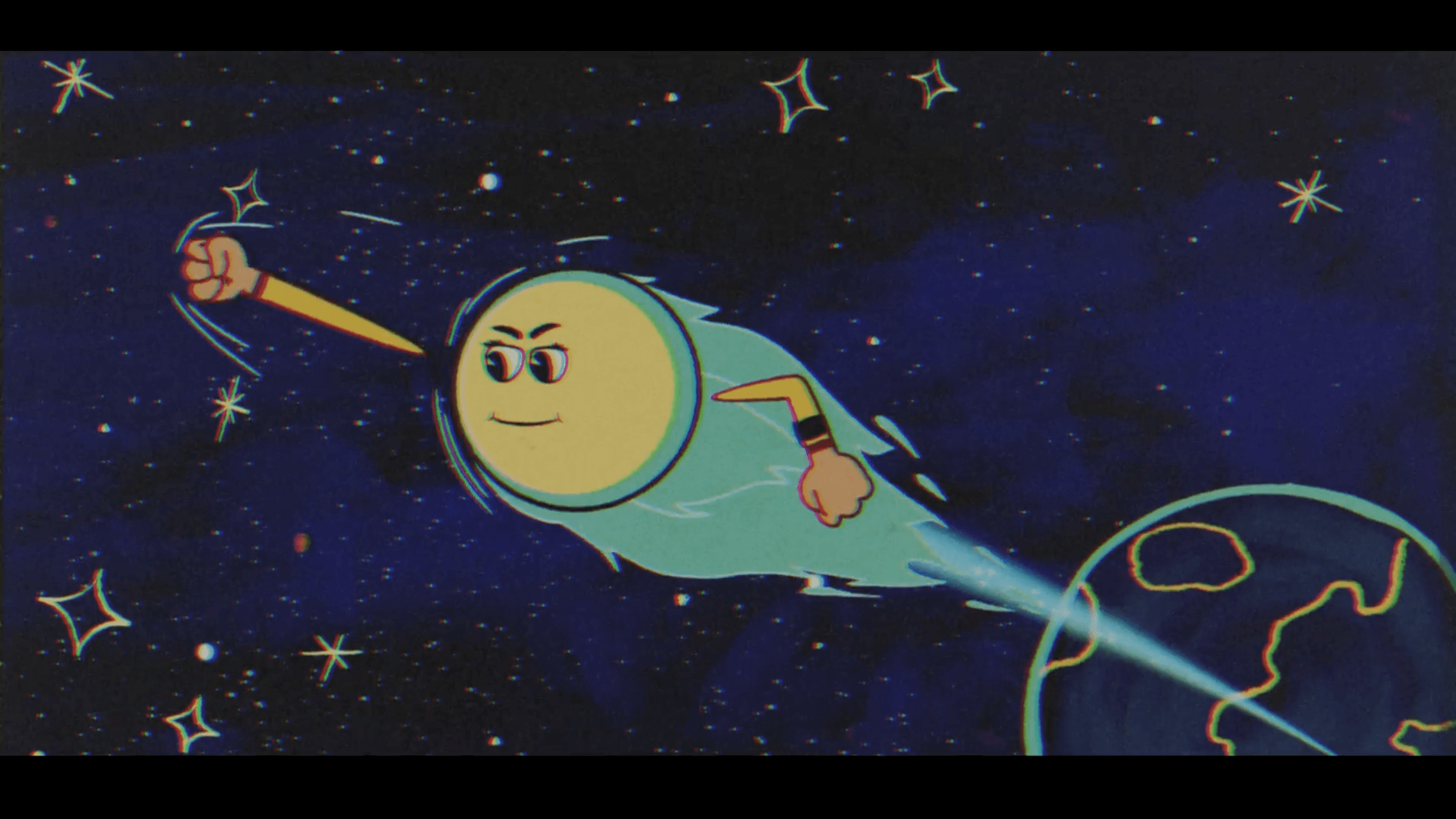A Trip to Infinity popped up on my Netflix account recently. The feature-length documentary explores infinity by interviewing cutting-edge scientists, mathematicians, theoretical physicists, philosophers, and cosmologists.
So much for targeted ads, I thought. If there really are infinite universes, there’s got to be one where I understand what any of those things are.
Then I saw the trailer. It was existential, perfectly paced and visually captivating. It was Motion Design to the rescue.
With eleven artists from almost as many countries, the filmmakers turned unfathomable concepts into palatable chunks that help you not only grasp the ideas but make you feel a part of the conversation.
I contacted directors Jonathan Halperin and Drew Takahashi, who told me the amazing story of how it got made.
We discussed the treatment being green-lit in seemingly record time, finding the artists to contribute, how they tied together vastly different styles and some of the difficulties of being on a deadline while being faced with infinity.
Apple in a Box scene from A Trip to Infinity | Christian Stangl
Give us a brief introduction to yourself.
Drew
Student of animation who has never had a passing grade and must repeat my lessons ad infinitum.
Jon
I am a director, writer, and producer. When I started out, I tried to get a job at Drew’s animation company in San Francisco Colossal Pictures. The job was primarily to sweep the studio and take out the garbage.
I didn’t get the job, and my career in animation was delayed by 20 years. Now, we sweep for each other.
What led you to Motion Design?
Drew:
I wanted to become a cinematographer but failed. I started a company with Gary Gutierrez to do a project that required live-action with animation. He was the animation guy, and I did the live-action. It all changed when he went off to shoot live-action effects for The Right Stuff, and I took over making idents for the newly formed MTV.
One might think having no art background, and only the most rudimentary animation skills might have been a problem, but instead, my lack of a personal animation style made me perfect for driving an eclectic approach to technique that was novel and lucrative in the media marketplace. It was high-adventure, sophisticated amateurism. Having fun and getting paid.
Colossal Pictures was my company (before its demise in 2000). Here’s a real from the 90s.
Jon:
In 1998, I pitched a fully animated documentary about the vanishing of the Vikings from Greenland. Ed Bell, the brilliant San Francisco artist, made a reel for free for me. It is beautiful and haunting, but nobody wanted an animated documentary back then. Now, it is just another tool in the documentary storytelling kit so we can tell amazing visual stories collaborating with artists from around the world.
Tell us about the team behind your project. Who are they? How did you find them?
Jon:
A Trip to Infinity is a true collaboration. Jason Spingarn-Koff, the Netflix executive, was fearless enough to commission an animated documentary about the search for infinities in reality and then became an amazing collaborator in shaping the story.
- Alex Ricciardi, editor and co-writer, is the best editor we’ve ever worked with.
- Angus Wall, the producer, is a genius who guided the project with a deft hand.
- Ivan Bess and Serin Marshall, producers, brought the film in under budget — rare for an animated movie.
The animators came from 11 countries.
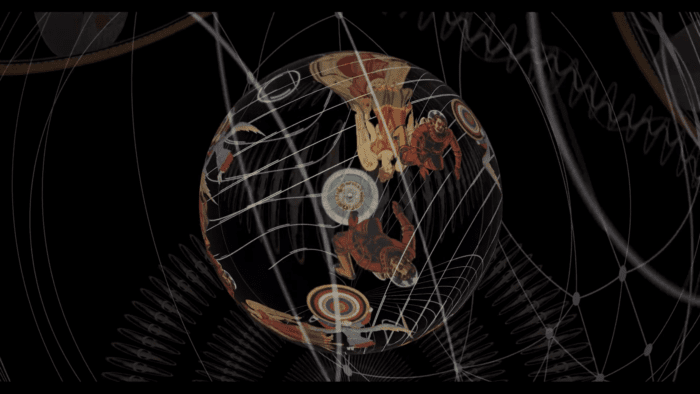
Conclusion by Tadju Takahashi
They were artists we knew from past work, some going back three decades, others we found from combing Motiongrapher or Vimeo — artists we had never heard of but just loved their work.
How would you introduce your project to someone watching for the first time?
Fantasia meets Cosmos.
Why was it so essential to use Motion Design in this film?
Drew:
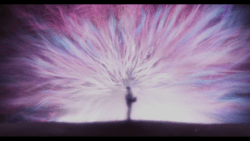
The ‘End of Life’ segment by Studio AKA
The spine of the film was from interviews.
With our inability to go to infinity to shoot footage, we had to make up the visuals. The challenge presented by the content argued for very different visual approaches pushing us to approach animators with unique styles and techniques.
Why Infinity?
Jon:
I was a horrible math student. Barely made it out of high school with the necessary prerequisites.
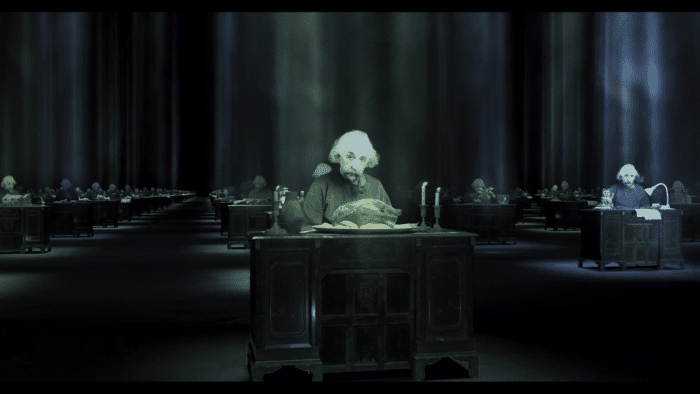
Infinite Einsteins by Compost
But I was always intrigued by math and loved reading about it, especially infinity. How can one not be fascinated by infinity? Do numbers go on forever? Will the universe?
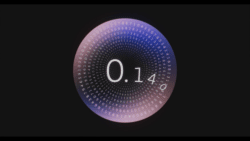
Irrational Numbers by Try Motion
Is it true you sent a five-page treatment to Netflix, and they picked it up? It must have been very persuasive. What did you say?
Jon:
I just checked. It was actually eight pages. It has never happened before, and it will never happen again. The credit goes entirely to Jason Spingarn-Koff, (from Netflix), who greenlit the film. I just think he was intrigued by the same questions about the universe that we were and took a gamble on the project.
This was the beginning of the proposal:
Thinking about infinity can be unnerving, weird. There are an infinity of infinities; some are bigger than others, but multiply infinity by infinity, and it’s still infinity. A hotel with an infinite number of occupied rooms still has room for infinitely more guests. A circle with a radius of infinite looks like a straight line. When you travel from A to B, you first must cover half the distance, then half the remaining distance, and so on; some very smart people have argued that you can never get to B. But we get where we’re going all the time. Placed in a very fast-moving spaceship, it may be possible for a machine to complete an infinite number of tasks in a finite period of time.
Let’s keep going. In an infinite universe – infinite in size and duration – there would be infinite copies of you reading these words; indeed, there would be infinite copies of you doing every possible action. You are surfing the largest wave ever formed in the Pacific, and you are chasing butterflies in a field in France, and well, there is a copy of you doing every possible thing with a non-zero probability of occurring. That is if the Universe is infinite in size and duration. You can pause now – you can take as long as you like – to think about that. Infinity is literally awesome: infinity contains an infinity of awe.
It isn’t the pitch to the Fast and the Furious or the next true crime doco. So… how did it get greenlit?
I’ll never really know.
What happened once Netflix said yes?
Can you give us a timeline?
Jon:
Netflix’s commission came in two steps.
First was development, during which we wrote a full treatment and budget for the film. This took around half a year. The treatment was based on intensive collaboration with Angus Wall from MakeMake and a team of mathematicians and scientists, Carlo Rovelli, Moon Duchin and Steven Strogatz.
The film then took 18 months from commission to delivery.
For a documentary, this is like light speed fast. There are projects I have had in development for years and years before they go into production.
How do you go about scripting a film
like this?
Jon:
Here is how we did it. Like everything else in the movie business, it comes down to casting. Finding the cast of scientists and mathematicians took six months. The next step is extensive pre-interviews on the phone. From these pre-interviews, we wrote a script. This script isn’t so much about specific words or beats but rather the overall structure.
From the script, we wrote interview questions for each of the participants. The first real script was written from the actual interviews, and from this, Alex cut a radio play. The first two cuts we sent to Netflix did not have a single image: just 80 minutes of voices over black leader. Once the radio play was approved, we started casting for animators.
Do you know much about maths? How did you cope?
Drew:
I was always good at math, but after taking calculus stopped being a practitioner. My love of the subject continued through reading biographies and watching presentations on blackboards that were too dense for my abilities. What fascinated me was the depth of pursuit after problems that seemed to have so little utility or impact (until, of course, some did). Much better than watching golf.
As to “how did you cope”, I let Jon take the brunt of the anxiety. Being the lead interviewer, he prepped as much as possible and relied on humility to get him through. It worked. Also, we were not trying to delve too deeply into the math as the film was intended for a more general audience.
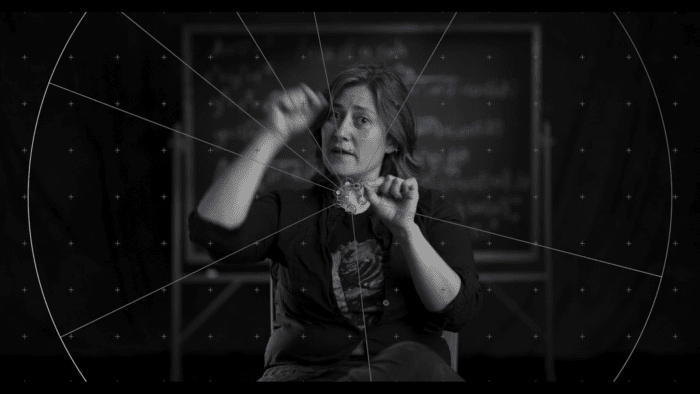
Circles by Try Motion
That said, Jon, Alex, and I spent a lot of time debating how to simplify without doing injustice to the underlying math. Those debates gave rise to a number of editorial variations.
How did you monitor the contributors? Were there regular progress meetings? How much time did they have?
Drew:
Our relationships with the different animators were as diverse as their styles. The radio cut showed us where these mini-films might start or end, but there was a myriad of possibilities, so job one was to cast our animators.
While wandering the internet, we found a student film by Rebecka Taule about pi. It was an elegant exploration of abstract mathematical concepts in a lyrical tale. Hiring her was a no-brainer for us.
Jon and I were fans of Susi Sie, who did micro-photography of physical phenomena. We did not want to get into the trap of using CG FX, so Susi’s work seemed perfect.
We had worked previously with Christian Stangl and knew his mix of photography and effects would work nicely for Apple in a Box. I had seen a title sequence for Ridley Scott’s Raised by Wolves that I liked far more than I liked the show. A little research took us to Studio AKA, who loved the project, but our budget allowed them to pick just one sequence. The end of the universe could find no greater portrait artist than them. So at this point, we had 20% of the animation covered.
With 80% yet to fill, the process became more serendipitous. Some sections, like Infinity Hotel, were pretty well described in the VO, so the process was more traditional cel animation. It was up to Gordon Clarke to add all the vintage visual fun.
The speed of light section also was done in a more traditional manner. Our editor/collaborator, Alex Ricciardi, presented us with the idea fully formed with him doing the soundtrack.
For a section about inside a black hole, I happened to find a film by Florian Grolig about a sketchy black character having to negotiate unseen obstacles in a world of white limbo.
It seemed like a no-brainer to do something similar but in black.
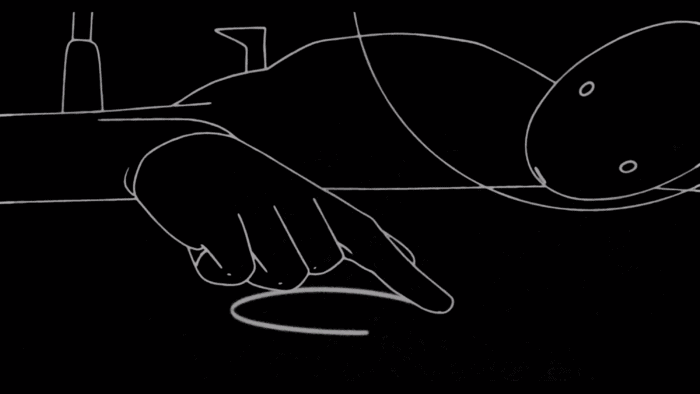
Inside Black Hole by Florian Grolig
So now we felt like we were good for the low-hanging fruit. There were many sections that were so open-ended they could work any number of ways. We were fascinated with the graphics of Raven Kwok, who offered algorithmic animation that was eye-boggling and seemed so appropriate…but for what?
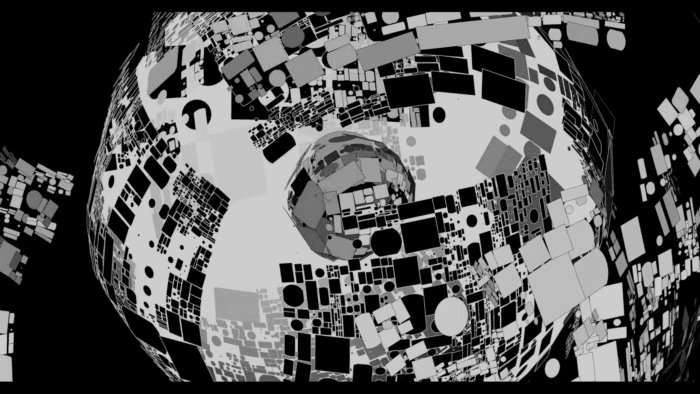
Big Bang Computation by Raven Kwok
Pasquale D’Amico did wonderful animation using antique zoopraxiscope discs that hinted at infinity but with no overt content.
Studio AKA introduced us to Mac Premo and Adrianna Dufay, who made interesting films that were live-action but with a strong graphic core.
Dimitris Sakkas created synthetic worlds that had a sense of real light and textures.
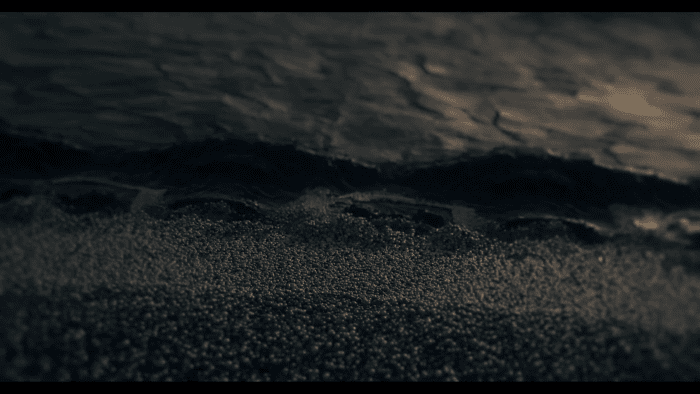
Infinite Infinities by Dimitrios Sakkas
Jimbo Matison is an old friend who always did outrageous fun films with cardboard and enthusiasm.
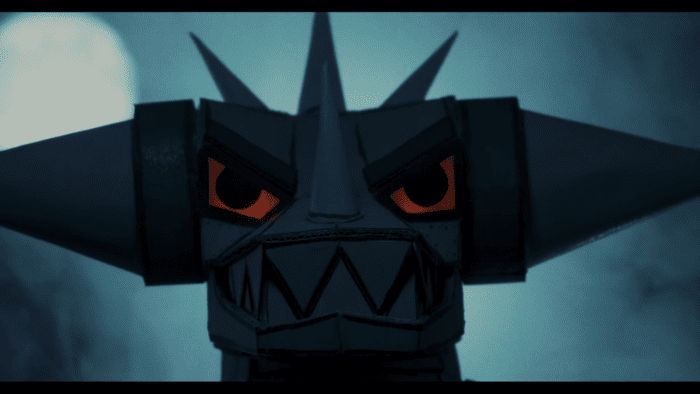
Bugendai by Jimbo Matison
So we had people we liked. We had holes to fill. The process with these folks was much more convoluted and iterative. We went to these animators not with concrete briefs but more with an array of problems to be solved. Everyone eventually found their place, and I think the results were mutually surprising and pleasing.
Infinite Hotel scene from A Trip to Infinity | Ffake
I have left out Compost from London, who are old friends and collaborators. They are amazingly inventive and conversant in all animation styles. What was most remarkable about working with them is that all the remaining holes in the film were jointly conceived and executed by them.
For every idea we had, they had ten others, some great and some shall not be mentioned (they were very sleep deprived). Even as our picture lock approached, they still brought an amazing energy and constantly made sequences better and better.
This is all to say that sometimes things go as planned, so you simply keep in touch through zoom. Others ended up being joint explorations that brought wonderful surprises. Some final work came out of inspiration born of desperation. What a trip it was. As we watched the final work come in, we saw the fruits of our trust and the wisdom of letting minds run free (until we didn’t).
How did you tie together all the different styles? How did you know that would work?
Drew:
Very early on we decided not to create smooth transitions from one animated piece to another as we quite liked collisions. The chapters helped justify some of the changes. Alex also cut some of the interviews that used our speakers’ own transitions to sidebars that made significant changes to just part of the interview flow.
Jon had the bright idea of bringing a black glass ball to the interviews to have some physical objects for our folks to interact with. Since a sphere contains its own infinities, it suggested using it as a visual thread throughout the movie from beginning to end. (We absolutely did not take the ball and “roll with it” because that would be a very low form of humor).
Scene from A Trip to Infinity
We tried to have some recurring elements, such as trains, but I think the audience was too busy keeping up with the concepts to notice.
Our biggest fear was that when we placed all the animation into the cut that it would feel disjointed and scattered. Animation takes a long time, and much of what we commissioned were pieces that didn’t neatly go through storyboards, animatics and pencil tests.
So a month before needing to send a fine cut to Netflix, our film was still half black leader. We were confident that each of the films in themselves would work nicely to illustrate its little place in the big film. Here it must be said that the understanding and faith Netflix exhibited was beyond belief.
In the end, we made a few changes in the order of pieces to help the flow, but we were quite relieved to see how it all felt.
In many films, the dramatic structure of acts gives an audience a sense of where you are in the movie. While some pieces, like the end of the universe, made it seem like we were coming to an end, the rest of the film didn’t tell us how far along we were.
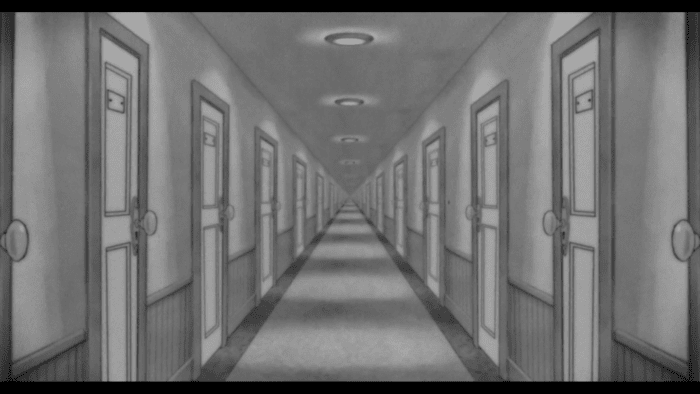
Infinite by Hotel Ffake
Will this film ever end? Several attempts at a table of contents/scrub bar were briefly entertained and then rejected.
Alex came up with the simple bifurcated screen that announces the chapters. It had no style, so it didn’t conflict with the other animation. It was neutral and also served as a palette cleanser and brain break.
What was your favorite moment or most fun part of the process?
Jon:
For 18 months, every day at noon, Drew, Alex (editor, co-writer), Serin Marshall, Ivan Bess (producer) and I, got together in the same zoom room. Some days that meeting lasted a few minutes, and others, hours. I miss that Zoom room. It is empty right now — waiting for us to sell the next project.
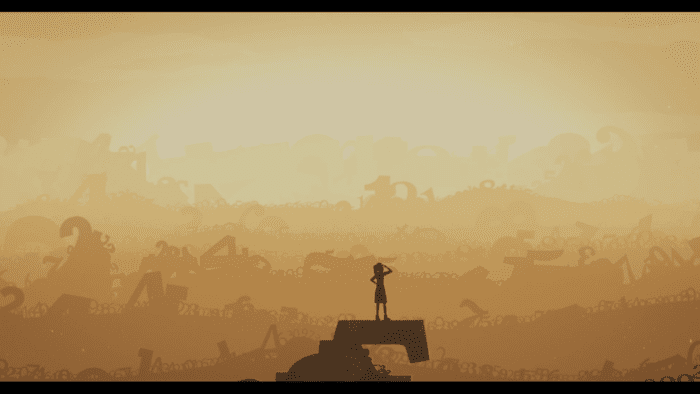
Numberland by Compost
Did you have any other ideas you liked that you didn’t go with? What were they, and why did you turn away from them?
Jon:
We had lots of ideas to incorporate complex live-action sequences into the animation. But for cost reasons and complications of production due to Covid, we decided to abandon those ideas. One involved filling the known Universe with sand and then counting the grains. For reasons that were, at first, not obvious to us, we came to realize that it was impractical.
Did you face any difficulties along the way? How did you overcome them?
Jon:
The first difficulty is that nobody on the team was very good at math. The second is that after the radio play finished, we had 70 minutes with no images. Drew was a tad panicked at that point. And the clock was ticking to our deadline.
Drew:
I was not panicked. Despondent was more like it.
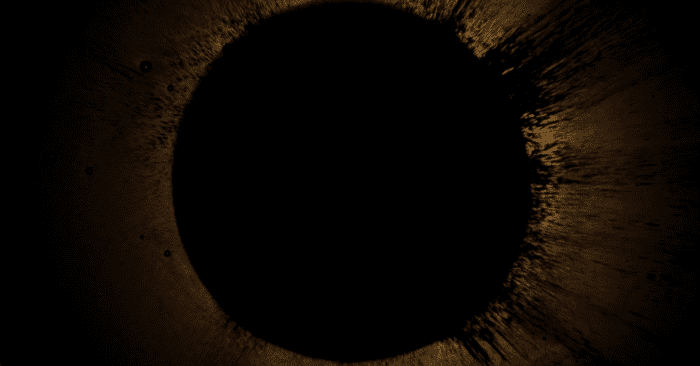
Black hole by Susi Sie
How do you deal with creative doubt on
a project?
Drew:
Alcohol
Jon:
Same or long mountain bike rides through dark woods.
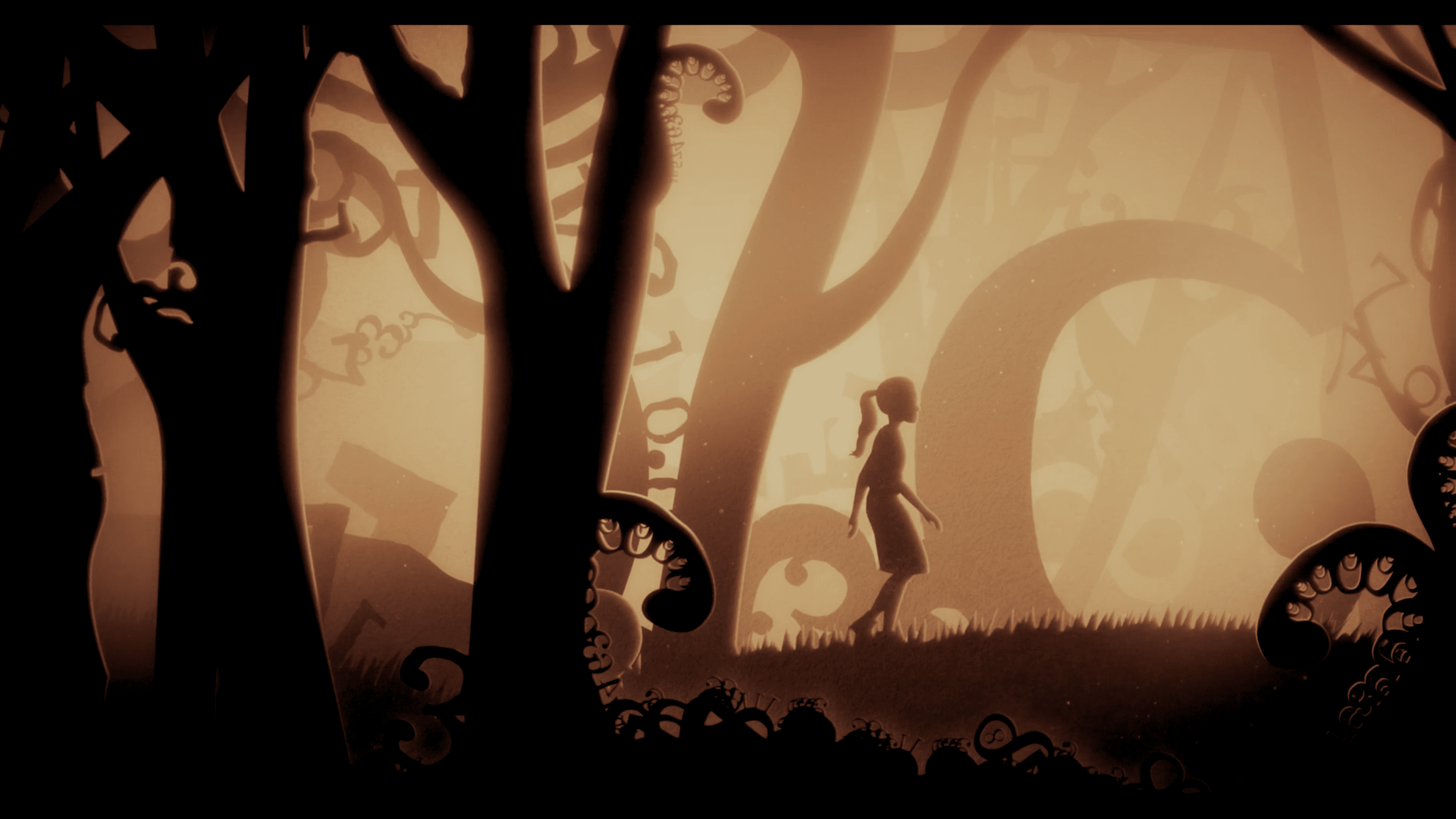
Do you have any advice for creatives on pursuing their dream projects?
Jon:
I wish I did. I wish I knew the magic formula. If I did, our next project would be greenlit.
My advice would be this: at first, it is all in the writing.
The story has to be clear and compelling on paper and in the proverbial elevator pitch. Executives get pitched ceaselessly.
And second, be a good collaborator.
Drew:
Don’t get too much money. Our budget was generous without being luxurious. Too much money means too many choices, and when your subject is infinity, that is one deep black hole to go down.
What’s next for you and your team?
Jon:
Trying to sell our next script. Already written. The Queen of Thieves. The story of the most notorious bank robber in history. One Sophie Lyons (one of 23 alias). She was the Danny Ocean of the last Gilded Age. But she is real. And her story has not been told. We are also developing a kind of part 2 for infinity, about black holes. Then we’re putting the band back together.
